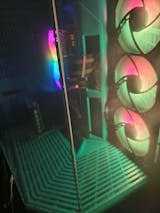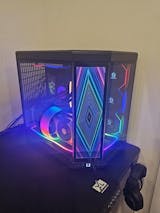Until recently, virtual reality was the stuff of science fiction and used to describe anything from a three-dimensional model on a computer screen to Arnold Schwarzenegger’s action-packed vacation to Mars in the film Total Recall. It wasn’t until the 1980s that “virtual reality” was coined as the term for this research area. Despite the foreshadowing proffered by scientists or writers and the invention of simulation technology throughout the twentieth century, virtual reality systems didn’t make their big debut in our everyday lives until the twenty-first century. Now, there are a wide variety of VR systems available to the average consumer. These systems range in form, function, and price. In this guide, we compare VR systems at every price point to provide the insight you need to determine your favorite.
Virtual Reality 101
Within the last two decades alone, VR systems have undergone rapid advancements in development and design modifications. Even more interesting, prices seem to drop as products get better and better. Virtual reality allows us to travel beyond our everyday lives or even beyond our world using nothing but the power of technology. The latest systems allow users to hear, see, smell, and taste as if you were physically present in that space and time.
Mobile vs. Tethered
The greatest VR contest lies between mobile and tethered systems. The big difference between these VR headset categories is how they deliver images to your eyes. Mobile VR headsets are fundamentally shells with lenses, into which you can place your smartphone and enjoy a mobile VR experience. The lenses separate your smartphone’s screen into two images. Let’s face the facts. Smartphones are not designed or optimized with VR in mind. Special lenses won’t provide the best picture, and mobile headsets are notably underpowered compared to counterparts.
Tethered VR headsets connect to computers or game consoles. The tethered design features a dedicated display in the headset as opposed to a smartphone, as well as motion sensors and external camera tracking technology that drastically improves image fidelity and head tracking. Cables might make tethered headsets a little cumbersome, but richer visuals result in a more complex VR experience.
However, tethered VR systems are much more expensive than mobile ones, with basic options starting around $400. If you’re looking for the simplest form of virtual reality, there are plenty of affordable magnifying lenses and headsets that will still give you a thrill. Affordable VR systems are also the most widely available option to consumers.
VR Systems by Price
There are a wide variety of virtual reality systems available to you but deciding on the right one for you is a personal decision. We rounded up a few VR examples in every price range to give you a good idea of what you can expect.
- Cheap: Even some of the simplest VR tools can still be immersive. Affordable VR systems span a broad spectrum of designs, ranging from plastic magnifying lenses to sheets of cardboard. Google released their own cardboard headset in 2014, and there are a variety of compatible apps, games, and phones. These simple headsets can be found for free or purchased for as little as $15 a piece. All you need to use the cardboard headset is your smartphone, but last-gen phones might have trouble handling compatible apps.
- Mid-Range: These headsets feature an array of upgraded features, including built-in controls, focus wheels, tracking sensors, or their own screens. Samsung’s Gear VR is one of the most popular mid-range headsets on the market. You can expect to pay between $75 to $125 for a sturdy VR headset. Software optimization means that these headsets are only compatible with the latest smartphones, so there may be hidden costs.
- High-End: If the highest quality VR experience is what you’re looking for, look no further than a headset that runs off an external computer or game console. Oculus Rift, Valve, Vive, and PlayStation’s VR are some of the most popular high-end VR systems available. These systems feature high-resolution screens, graphics, motion tracking, and so much more. The downside to spending more is the necessity for a VR-ready device. High-end headsets can cost anywhere from $500 to $800, but your computer or console must meet model specifications. Using LEDs or some other kind of positional tracking, these systems allow you to move and walk through space in any direction.
If you have any questions about VR systems or would like to learn more about our VR-ready products, please call, email, or chat online with XOTIC PC today for additional information.














